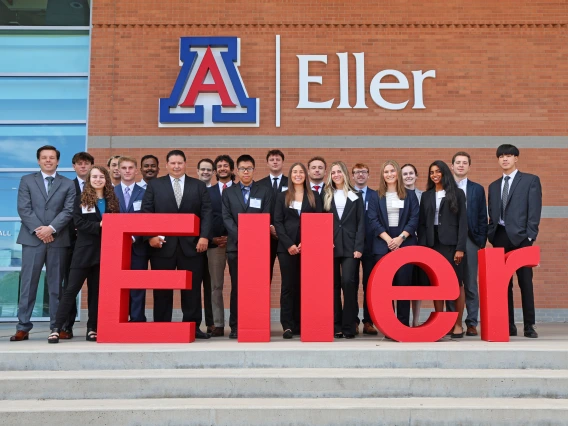STEM Education and Beyond—How Students are Choosing STEM Careers and Shaping the Future

With exponential advances in science and technology over the last few decades, there has never been a better time to study and specialize in STEM. Particularly with the advances in AI, industries need qualified and talented employees to harness its power for newer and smarter applications. The U.S. is a global leader in science and technology—much of its success, however, can be attributed to the large number of international students who pursue STEM and business degrees and stay on as members of the workforce. In India, a country with a strong education system and a large pool of talented students, there has been a significant increase in the number of students pursuing higher education in STEM fields in the United States. Culturally, Indian families tend to encourage their children to study STEM, which is why—unsurprisingly—a large fraction of those students are Indian. This trend is driven by a variety of factors, including the quality of education available in the US, the opportunities for research and internships and the potential for higher-paying jobs after graduation.
What Indian students study most often
At the undergraduate level, most Indian students in the U.S. opt for engineering, computer science and business. At this stage, they are still exploring their options within STEM and, thus, more likely to choose broad-spectrum degrees that give them exposure to multiple disciplines. Engineering, computer science and business are the most popular undergraduate degrees.
At the postgraduate level, we see more Indians in specialized degree options. By this time, students have had some exposure to how STEM works and know their own aptitudes and preferences better. As an example, at the University Of Arizona, over 50 percent of grad school applications from India are for MS Data Science (676), MS Computer Science (532) and Management Information Systems (309). This is in keeping with the burgeoning popularity of big data and machine learning as specialization areas as well as the continued interest in enhancing computing capabilities.
Many students opt to study business courses in addition to their STEM degrees. This is a good option for those who want to stay in the sciences but don’t necessarily want to do the hard research themselves. Business Courses teach them how to run the operations side of any STEM venture and keep the flow of work going, be it in terms of securing the right financing or hiring the right people for the right projects. And their STEM background gives them a more in-depth understanding of the venture than a manager from a non-STEM background.
Career options after a STEM degree
STEM has always been one of the most lucrative fields around the world, and with the rapid pace at which computer science and data science are evolving, there is more than enough room for all the STEM graduates entering the workforce. Among the popular career choices are Software Engineer, Biochemist, Computer Systems Analyst, Robotics Engineer, AI Engineer, Web Developer, IT Manager, etc.
The higher the student’s qualifications, the higher the salary they can negotiate and the stronger their long-term prospects. All of these careers require at least a bachelor’s degree, and most need a master’s degree.
Many are concerned that new advances in automation and robotics will render human technicians redundant. While it is true that robots and autonomous systems can handle routine tasks much more efficiently, we will still need humans to design, maintain and control those robots and systems - more specifically, people with a deep understanding of robotics and AI/ML and how they work. This means that STEM graduates will continue to find career options - as long as they keep upskilling and staying in touch with the latest developments.
The way forward
As a global hub of both education and career opportunities, the US continues to attract thousands of student applications every year. India and other Asian countries are key sources of graduate-level talent, and the US is starting to nurture that talent flow consciously. Recently, for instance, the Department of Education initiated the YOU Belong In Stem National Coordinating Conference (designed to strengthen Science, Technology, Engineering and Mathematics (STEM) education nationwide). Many universities, such as the University of Arizona, also offer special scholarships or teaching assistantships to international students. In conclusion, the increasing number of Indian students in disciplines such as engineering, computer science, business, and medicine in American universities is a testament to the mutual benefits of international education. The skills and knowledge gained by these students contribute not only to their own personal and professional growth but also to the global workforce and the continued collaboration between the United States and India. As we move forward, it is crucial to recognize and celebrate the diversity and talents of Indian students, fostering an environment that nurtures their aspirations and allows them to thrive in their chosen careers.
This article originally appeared in the Deccan Herald. It was written by Anil Agarwal, adjunct instructor in international business.
The Eller graduate experience comes in many forms, including five MBA programs, 12 specialized master’s degrees and many more options for concentrations, specializations, dual degrees and certificates.
Ready to Learn More?
Request more information now!




